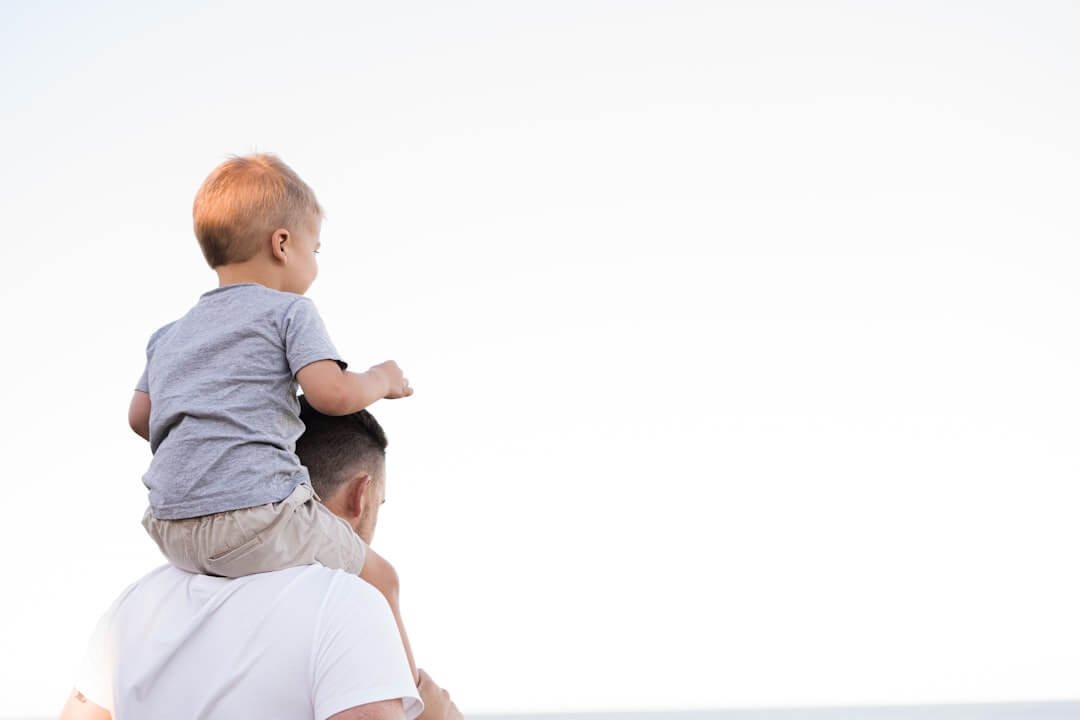I'm Rachael
Mom of 3 & Baby Sleep Expert with Big Sis Energy
& I’VE DONE ALL THE RESEARCH FOR YOU ALREADY.
Better sleep for the entire family
BROWSE COURSES
hey!
Night Terrors, Sleep Inertia and Other Childhood Parasomnias
February 15, 2025
If you’ve ever experienced a night terror, nightmare or what seems to be an extreme “tantrum” with your child in the middle of the night or when they wake up, you know it can be quite alarming! There are some things you should know about what to do in the moment, how to possibly prevent them from happening, and what other symptoms you should be looking out for if these are occurring regularly.
In this post:
What is a night terror and what are the signs?
Waking up crying or throwing a tantrum
Causes and other symptoms to look for

What are the signs of a Night Terror in Children?
Night terrors are a type of parasomnia, classified as an arousal disorder that occurs during non-REM sleep. They usually occur during the first 3-4 hours of the night and are most common in children aged 3-12. Although your child may appear to be afraid of something or someone in the room, attempts to wake them often prove unsuccessful. They may look awake and be crying or flailing. Often they will be inconsolable during the episode but will fall back into a deep sleep and will have no memory of the disturbance in the morning. Night terrors typically last around 10 minutes but they can last up to 30-40 minutes. They tend to come about in times of high stress or separation or when a child is sick. Here are some of my tips for identifying and handling night terrors in toddlers.
Night terrors can be really scary for the parent to witness. It’s best to NOT try and wake your child up but to just keep them safe and wait for the night terror to pass. Don’t attempt to talk to them or shake them awake or reason with them during a night terror, just allow them space and make sure they don’t hurt themselves.
To potentially prevent night terrors:
- If the night terror always happens at the same time, you might do a “dream pee” for your child right before they normally occur (maybe 5-10 minutes earlier or so) by gently waking them, letting them go pee, and tucking them back in.
- You an also “reset” the brain if they occur at the same time every night by lightly rousing your child a few minutes before the usual time of the night terror, and offering a drink of water or something, then letting them fall back to sleep.
- One of the most common triggers for night terrors is overtiredness or sleep deprivation. Try playing with your child’s schedule and offering an earlier bedtime with a consistent, calming routine to see if that helps.
- If your child has been going through a difficult time with new school, move, family separation or other stressor, checking in with a child psychologist or family therapist can be helpful.
Night terrors are often developmental and can go away with age. They are most common between the ages of 3-7. It’s always a good idea to check in with your child’s healthcare provider if they have a night terror, especially if it lasts longer than 30 minutes or happens more than once per week. If there are symptoms with the night terror like drooling, stiffening body or jerky movements contact your doctor right away. Sometimes seizures are mistaken for night terrors.
My Child Wakes Up Crying or Throwing a Tantrum- What’s That?
If it doesn’t seem like a nightmare OR a night terror is happening, it could be something else, called a confusional arousal or sleep inertia. You may notice that your child is waking at night and seeming disoriented, upset, confused, or is just calling or crying out but don’t seem fully “awake.” These are like less-extreme night terrors and pass on their own.
Confusional Arousals are a Non Rapid Eye Movement parasomnia, most often occurring when the sleeper is awoken during deep sleep. It usually lasts 10 minutes or less. If this happens in the middle of the night, quietly comfort and keep them safe until they fall back asleep. If it happens in the morning or after a nap, allow your child to slowly wake up- limit talking or questioning and just be “there” for them until they feel more oriented.
You may help your child with this if it’s occuring mostly during their nap by allowing them to sleep a little longer and waking them up slowly and gradually. You can do this by simply turning off/ turning down their sound machine or cracking open the blinds, rubbing their back, etc. You may also try to offer some water and a snack immediately upon waking them up, or nurse if you are breastfeeding. Sometimes sleep inertia happens simply because the toddler brain is having a hard time transitioning from sleep to awake state, and they need some patience and time.
If your child is waking up at night and is alert but screaming or crying, rule out pain or discomfort with your doctor. Sometimes we see this behavior with things like ear infections or UTI’s if there aren’t a lot of other more obvious symptoms.
If you’re experiencing anything like this, it can be helpful to write down what happened and take video if possible to share with your healthcare team.
What About Nightmares?
A nightmare is a little different. A nightmare occurs during REM sleep. It’s a frightening and vivid dream that can happen to any child. They may remember the dream come morning or it might wake them up.
Some reassurance and perhaps a nightlight can be helpful if your child has frequent nightmares. Assure them that they are safe and that you are there to protect them. Letting them know they’re always welcome in your room can be helpful, too, or setting up a floor bed should you need to room share with them for part of the night can be useful as well.
Nightmares tend to increase in times of stress, change, etc. and commonly start around ages 3-5 when imagination is growing.
Getting curious is key! Has your child been exposed to a scary show or movie? Is there something in their room making a noise or casting a shadow that’s scaring them? Sometimes nightmares are random and the best thing we can do is assure them that they are safe and that we are there to protect them. Some reassurance and perhaps a nightlight can be helpful if your child has frequent nightmares. Letting them know they’re always welcome in your room can be helpful, too, or setting up a floor bed should you need to room share with them for part of the night can be useful as well.
Other Parasomnias
Other parasomnias children may experience include sleep walking and sleep talking. Sleep walking may require extra safety proofing to keep your child safe.
Causes + Other Symptoms to Look For
Many parasominas, like night terrors, have genetic components and resolve as children get older. Some common causes for night terrors include:
- Sleep deprivation
- Stress or anxiety
- New surroundings or other big life changes
- Fevers or illness
- Full bladder
- Certain medications
Bearing that in mind, there are other more serious sleep disorders that can be the trigger for things like night terrors. These include:
- Obstructive sleep apnea
- Periodic limb movement disorder or restless leg syndrome (we see this often with children low in iron or ferritin)
If your child has any of the following symptoms in addition to night terrors, it’s a good idea to check in with a doctor and possibly get referred to a specialist like an ENT and/or a Pediatric Dentist. A sleep study and/or blood work may also be warranted.
- periodic pauses in breathing during sleep
- snoring, gasping or choking during sleep
- teeth grinding during sleep
- difficulty falling asleep or staying asleep
- very restless body, particularly limbs, during sleep
- atypical positioning during sleep such as bum high in the air or head arched way back
- tongue/oral ties
- digestive issues such as reflux or constipation
Mouth breathing during sleep can be a significant indicator of sleep-disordered breathing, which is often linked to night terrors in children and adults. This is because if you are mouth breathing while sleeping, it could be a sign that they are not getting enough oxygen due to airway obstruction, potentially triggering night terrors during disrupted sleep cycles.
Additional Resources:
This episode of No One Told Us with Dr. Ben Miraglia, airway focused dentist, shares some great information about how to address and treat these issues in young children.
This episode discusses Tongue Ties and Mouth Breathing more in depth, with PT Beth Morel.
This episode with Dr. Song, an integrative pediatrician, discusses the role minerals and vitamins play in our childrens’ health an sleep and discusses the importance of Iron in depth.
For more, check out my IG highlights on airway, iron, tongue ties and more, as well as my Blog Post on Red Flags:
binge reads
We think you'll love these
You deserve to the
baby stage, not just "survive it."
And you DON'T have to sacrifice your values, ignore your instincts, or force yourself to follow a method you don't align with just to get your baby back to sleep.
I’m here to help you create a restful, sustainable sleep environment that honors both your baby’s needs AND your own (without the stress OR the guilt!) because, no, you don’t have to choose between the two.
enjoy!
BABY SLEEP COURSES →
BABY SLEEP CONSULTS →
Wish you could help your baby sleep better without resorting to sleep training? Download my FREE guide to a good night’s sleep and learn 8 simple, science-backed tips for supporting your child’s needs.
Traditional sleep training methods don’t have to be your solution to better sleep.
SLEEP TRAINING ISN’T THE ONLY WAY TO GET GOOD SLEEP
Hey, I'm Rachael and Hey, Sleepy Baby is for parents who want to get their nights back, without sleep training their babies.
NO ONE TOLD US POD
explorING the untold truths of parenting


